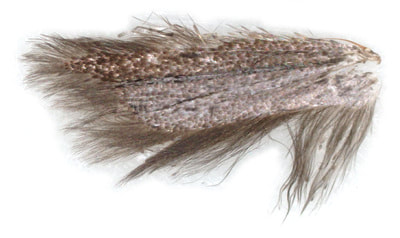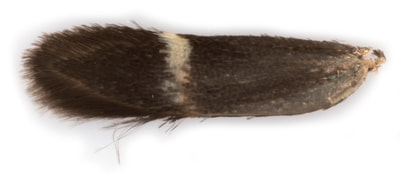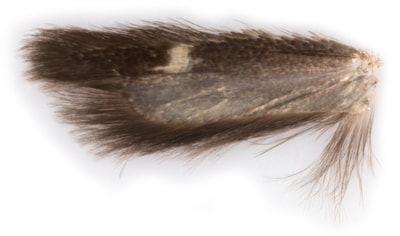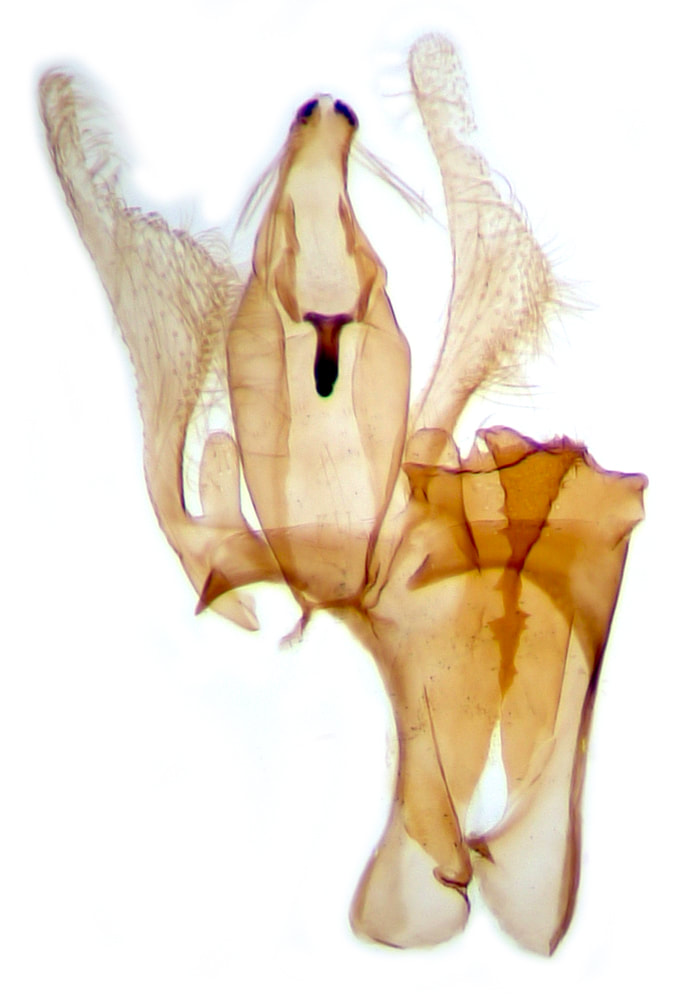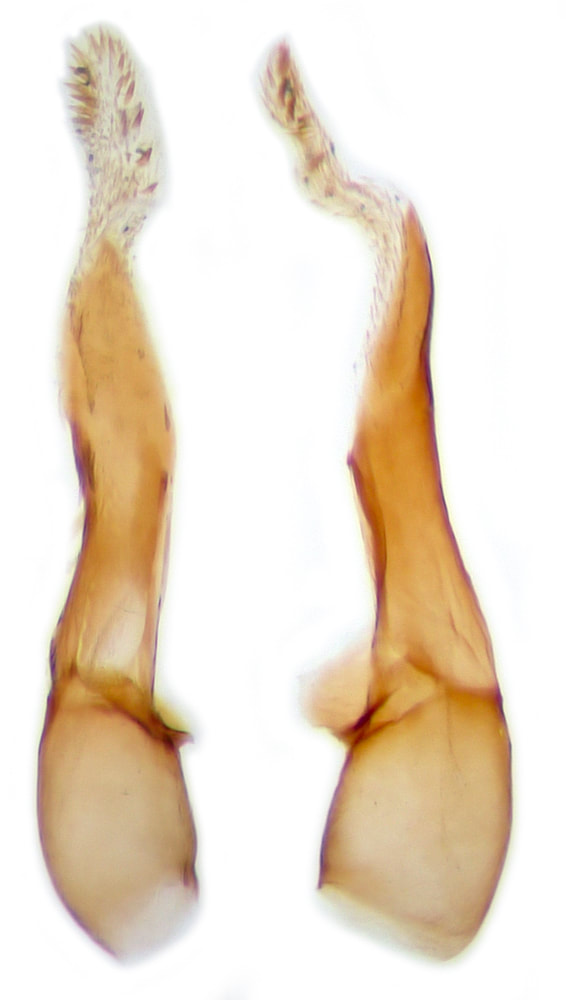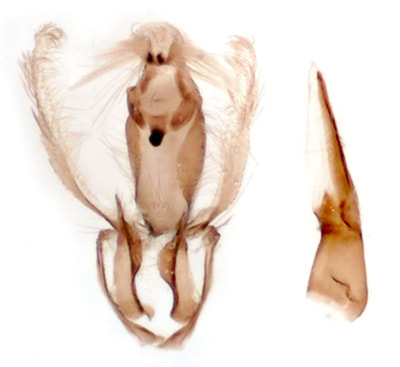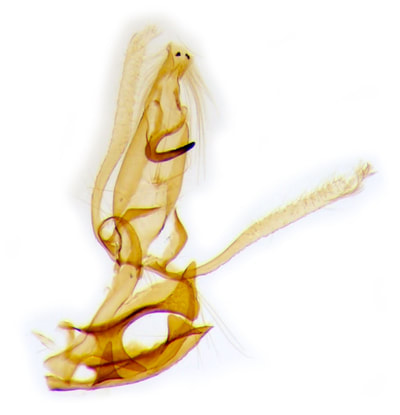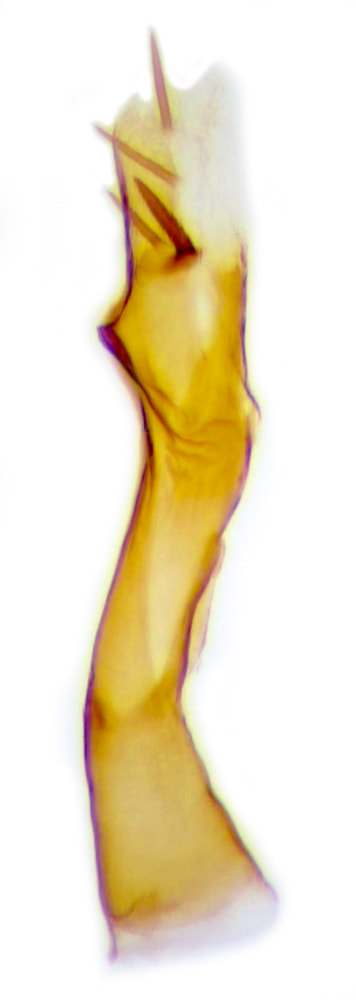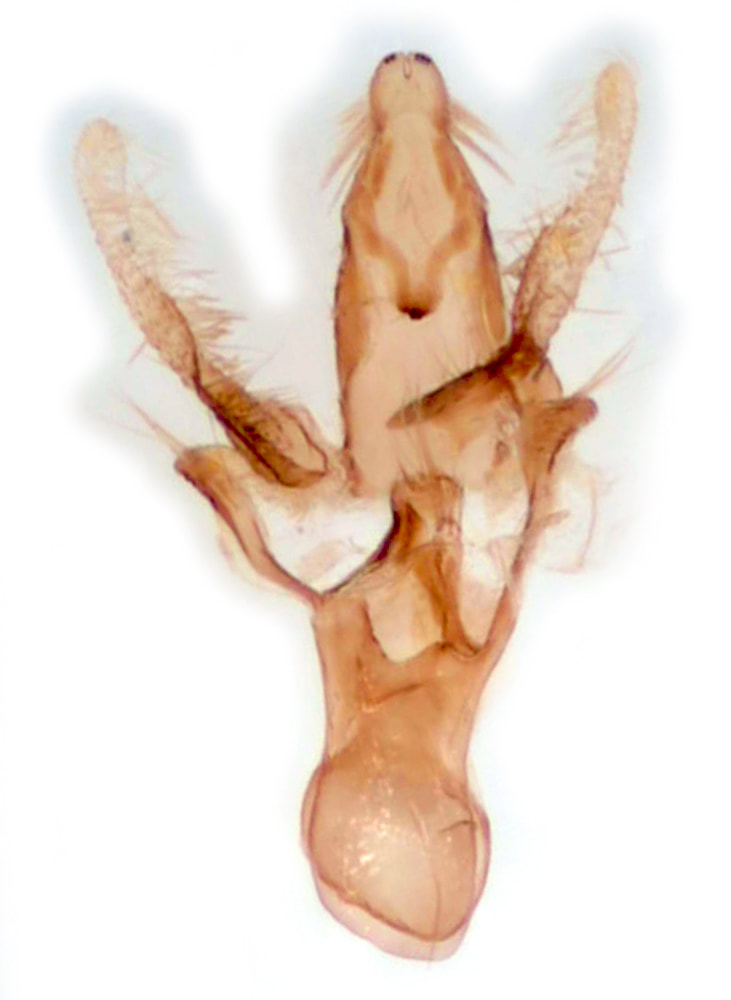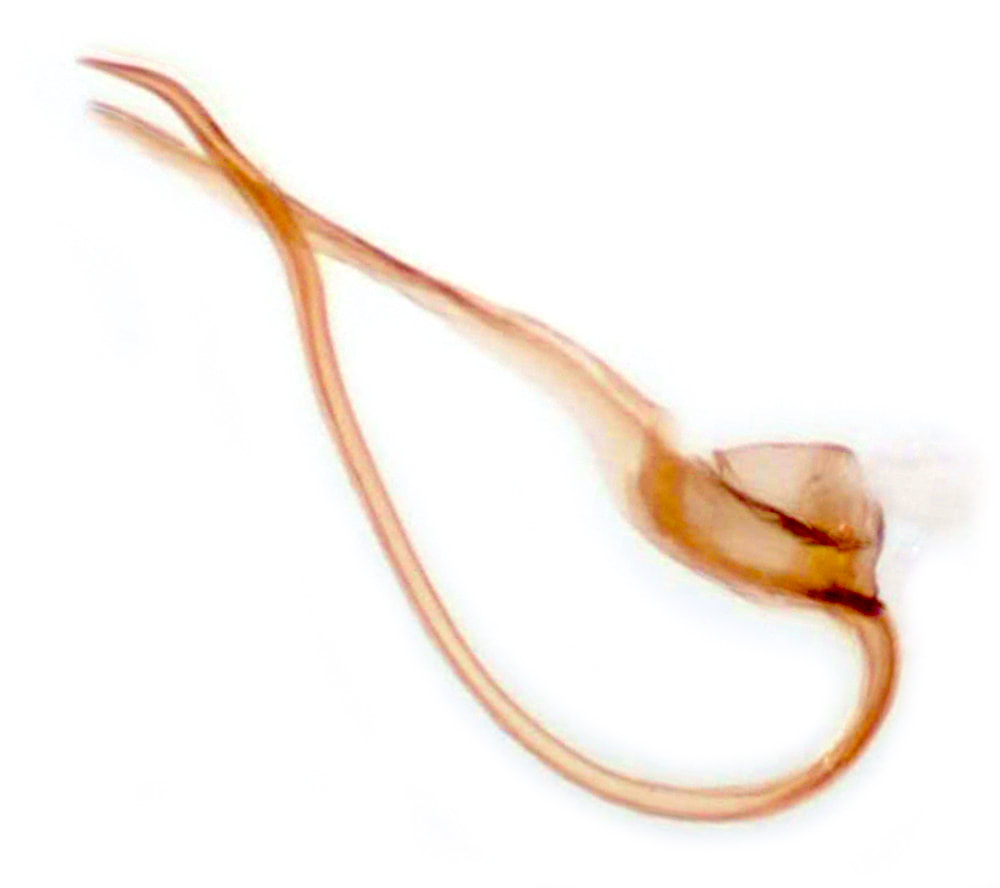Aproaerema |
All except A.anthyllidella formerly placed in Genus:Syncopacma; synonymised in 2019
Generic features: Ocelli present or absent; antennal scape without pecten; labial palp long and slender, S3 longer than S2
Male genitalia: Uncus not cleft, with black pegs. Female genitalia without signum.
Overview: Only A.polychromella is distinct in being very small with a buff forewing base and broad white fascia - this is usually a rare vagrant but ~70 were recorded in 2015. All the other species require dissection to confirm identity. A.cinctella/larseniella/taeniolella/albifrontella/albipalpella/suecicella are all blackish with a narrow more or less distinct white fascia on the forewing at just beyond 1/2. Some separation may be achieved based on foodplant with the first 3 named feeding on bird's-foot trefoils (Lotus spp) and the last 2 on Genista spp (hairy greenweed or petty whin). There has only been a single British record of A.albifrontella.
In A.sangiella/vinella/anthyllidella the white fascia is reduced to tornal and costal spots (so that they appear similar to Eulamprotes species).
A.vinella is currently only known to occur on the Isle of Wight. Further difficulty arises as the forewing fascia may be reduced to just a costal spot in A.cinctella or entirely absent in A.larseniella/cinctella/vinella. A.taeniolella shows a narrow pale fascia on the forewing underside and a pale costal spot on the hindwing underside; A.larseniella shows a less distinct pale fascia on the forewing underside and lacks the pale spot on the hindwing underside
Male genitalia: Uncus not cleft, with black pegs. Female genitalia without signum.
Overview: Only A.polychromella is distinct in being very small with a buff forewing base and broad white fascia - this is usually a rare vagrant but ~70 were recorded in 2015. All the other species require dissection to confirm identity. A.cinctella/larseniella/taeniolella/albifrontella/albipalpella/suecicella are all blackish with a narrow more or less distinct white fascia on the forewing at just beyond 1/2. Some separation may be achieved based on foodplant with the first 3 named feeding on bird's-foot trefoils (Lotus spp) and the last 2 on Genista spp (hairy greenweed or petty whin). There has only been a single British record of A.albifrontella.
In A.sangiella/vinella/anthyllidella the white fascia is reduced to tornal and costal spots (so that they appear similar to Eulamprotes species).
A.vinella is currently only known to occur on the Isle of Wight. Further difficulty arises as the forewing fascia may be reduced to just a costal spot in A.cinctella or entirely absent in A.larseniella/cinctella/vinella. A.taeniolella shows a narrow pale fascia on the forewing underside and a pale costal spot on the hindwing underside; A.larseniella shows a less distinct pale fascia on the forewing underside and lacks the pale spot on the hindwing underside
Male genitalia: All except A.albifrontella are illustrated in MBGBI4.2 pp36-37; all except A.vinella and A.albipalpella are shown at Moth Dissection. All show black pegs on the uncus, a stout hooked gnathos and usually narrow poorly sclerotised valvae and a tapering aedeagus. Diagnostic differences occur in the shape of the aedeagus and the sacculi.
A.cinctella - distinctly "elbowed" valvae and aedeagus tapers to a narrow apex with several small spines.
A.larseniella - aedeagus has a strong sclerotisation on one side in the apical half.
A.taeniolella - aedeagus not tapered and has 3 or 4 long spines at the apex.
A.albifrontella - sacculus bifid with a long, narrow, curved and pointed lateral arm.
A.vinella - aedeagus shows a distinct basal bulb and a very finely tapered apex.
A.sangiella - aedeagus similar shape to S.larseniella but lacks the strong apical sclerotisation; sacculi long narrow and rounded at the apex.
A.albipalella - aedeagus curves into a slight corkscrew at the apex.
A.suecicella - aedeagus somewhat bulbed with a tapering apex and the sacculi are elongate with a rounded apex.
A.polychromella also has a bulbed aedeagus but the sacculi are more triangular with a pointed apex.
A.anthyllidella has a notched uncus and a long very narrow curved aedeagus
A.cinctella - distinctly "elbowed" valvae and aedeagus tapers to a narrow apex with several small spines.
A.larseniella - aedeagus has a strong sclerotisation on one side in the apical half.
A.taeniolella - aedeagus not tapered and has 3 or 4 long spines at the apex.
A.albifrontella - sacculus bifid with a long, narrow, curved and pointed lateral arm.
A.vinella - aedeagus shows a distinct basal bulb and a very finely tapered apex.
A.sangiella - aedeagus similar shape to S.larseniella but lacks the strong apical sclerotisation; sacculi long narrow and rounded at the apex.
A.albipalella - aedeagus curves into a slight corkscrew at the apex.
A.suecicella - aedeagus somewhat bulbed with a tapering apex and the sacculi are elongate with a rounded apex.
A.polychromella also has a bulbed aedeagus but the sacculi are more triangular with a pointed apex.
A.anthyllidella has a notched uncus and a long very narrow curved aedeagus
Page published 2019? | Revised to alter genus 15/11/2021

